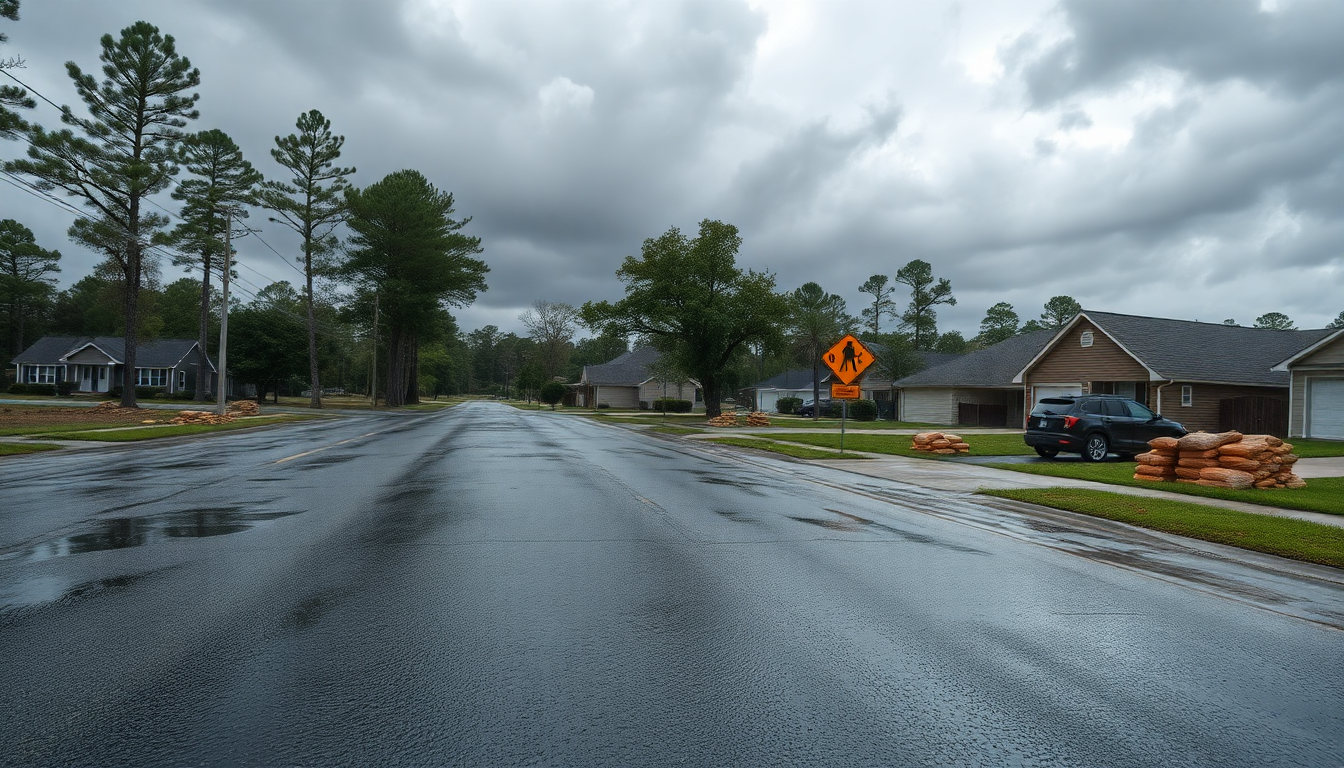Table of Contents
Tropical Storm Chantal has downgraded to a depression, but it still poses serious risks for folks in central and eastern North Carolina. As the storm drifts inland, flash flooding has become a major concern. With forecasts predicting heavy rainfall in the next few days, it’s crucial for residents and travelers to stay updated and pay attention to safety warnings. Are you ready for what’s coming?
Chantal’s Path and Current Status
According to the National Hurricane Center in Miami, Chantal made landfall near Litchfield Beach, South Carolina, early Sunday morning. By 11 a.m. EDT, it had moved to about 80 miles west of Wilmington, North Carolina, cruising along at 9 mph with maximum sustained winds of 35 mph. Although the storm is losing strength, it’s expected to shift its course toward the northeast later today. Curious about how this will affect your area?
While tropical storm warnings have been lifted for some parts of South Carolina and North Carolina, the risk of heavy rainfall still looms large. Total precipitation could range from 2 to 4 inches, with some isolated spots possibly seeing up to 6 inches. This raises the alarm for flash flooding, especially in low-lying areas. If you live in a flood-prone region, it’s best to stay alert and take extra precautions.
Warnings and Safety Precautions
Given Chantal’s current trajectory, South Carolina’s Emergency Management division has put out alerts about the chance of isolated tornadoes along the coast and minor coastal flooding. Remember, it’s vital to avoid driving through flooded roads and to respect any road closures you encounter. Is it worth the risk to drive through water?
Moreover, forecasters warn that dangerous surf and rip currents are likely to persist along beaches from northeastern Florida to the mid-Atlantic states. If you’re planning to hit the beach in the coming days, stay sharp and follow safety advisories to keep yourself out of harm’s way.
Looking Ahead: Weather Forecasts and Community Preparedness
As Chantal continues to lose its punch, communities should stay prepared for the lingering effects of heavy rain and possible flooding. Keeping an eye on local weather updates and putting safety measures in place can significantly reduce the risks associated with severe weather. Are you prepared for those unexpected downpours?
The mix of heavy rainfall and coastal hazards underscores the need for community awareness and readiness. Make sure you’re keeping track of reliable weather sources and take proactive steps to prepare for any nasty weather that may follow in Chantal’s wake. After all, being prepared is the best way to stay safe!


